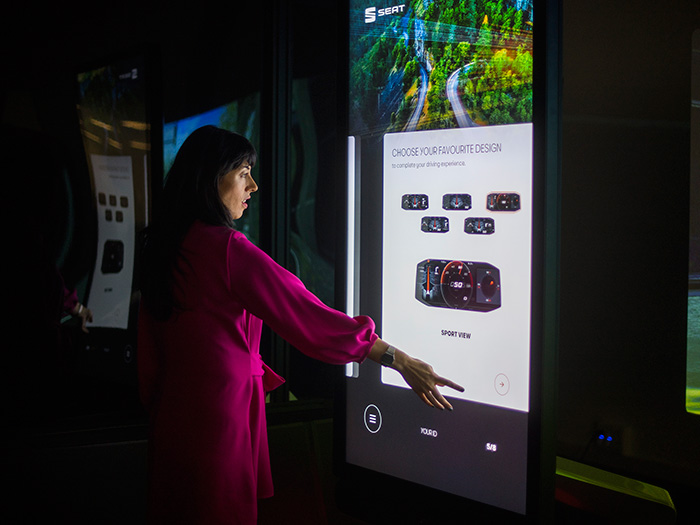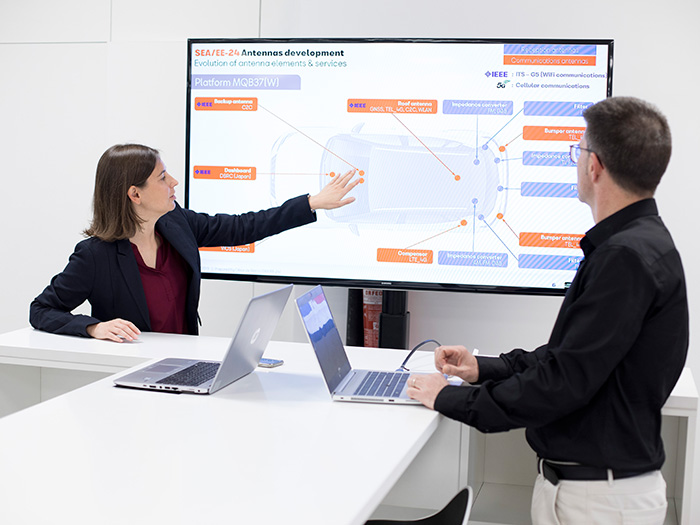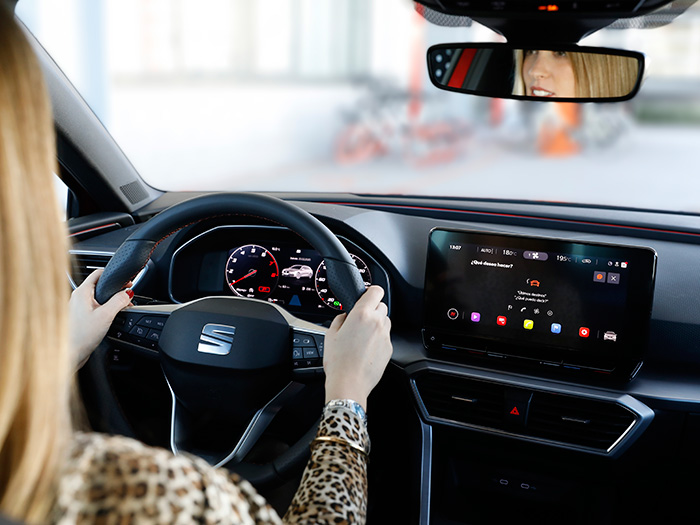Women moving the mobility of tomorrow
Women have influenced the evolution of motoring - and their role will be even more important in the future. Here are the stories of three women - engineers, telecommunications and cybersecurity specialists - leading the development at SEAT, where innovation continues apace.

The rear-view mirror, turn signals and road lines are all innovations that owe their existence to female creativity. And while the role of women was important in the past, it will be even more crucial in the future - both as users and as creators of a shared, connected and electric mobility.
At SEAT, for example, three women are leading development in the vital areas of connectivity, voice assistants and cybersecurity. These are their stories.
The new generation of voice assistants

Anna Homs is developing the voice assistants we will be using in 2030. She leads a team of professionals from China, the USA and Germany that studies users’ needs and develops concepts designed to be used ten years from now.
“Voice assistants are going to be a key element in the future of mobility, as it is a simple and easy-to-use form of communication that is increasingly common at home, on mobile phones and, of course, in the car”, explains Homs, SEAT engineer and Volkswagen Group Innovation project manager. She also stresses the disruption the automotive world is undergoing: “We are at a crucial time, with many changes and challenges. I think it's essential to get involved to do it your way”.
The future of connectivity

Connectivity plays an equally central role in the mobility of today and tomorrow. For Paqui Lizana, SEAT's digital products manager, the main objective of her work is to make increasingly complex devices easier to operate.
“In a fully connected ecosystem, we will proactively suggest to the users the the best way to get around to users at all times, whether by car, motorcycle or another form of transport. With the future in mind, digital products will be the key to giving them the experience they want and allowing them to take it from one vehicle to another”, she explains.
A fundamental contribution
Like Homs, Lizana is an engineer, although she works in telecommunications. She agrees with Homs on the importance of this time: “My passion is to bring about change. I believe that our contribution is very valuable, as the key to innovation is diversity.” Now 37, she has seen the number of women in the engineering sector grow. In countries like the United Kingdom, for example, the number of female engineers has doubled in five years, reaching 58,000, according to the Women in STEM association.
In order to make technical studies and the automotive sector more attractive to female candidates, SEAT has started to collaborate with the UPC (Universitat Politècnica de Catalunya) on their STEM program. The initiative aims to promote technical careers directly to children between 9 and 12 years old - the age where it is thought that they begin to consider what kind of professional choices they would like to make in the future. Some female engineers working at SEAT will give lectures in their middle schools informing female students of the opportunities available to them after their studies.
Cybersecurity

And for the future of connected mobility to be secure, Mareike Gross's role is critical. In SEAT's Development Department, she leads the electrical systems, packaging and cybersecurity team. “We're working very hard on the digital protection of cars to protect them from possible hypothetical attacks”, explains Gross. Although she graduated in Economics, she has always worked in automotive development.
“When I came to SEAT, I was happy to see the number of women working in development. I really think it's important that we are here, because we have to design mobility that takes into account different interests and needs - mobility that is all-inclusive”.
Electric cars and carsharing

And because of this, women will revolutionise the sales of electric cars, according to a study by the University of Sussex and Denmark's Aarhus University. They give more priority to safety and ease-of-use and take factors such as costs and the environmental impact into greater account.
This is also why car sharing has significant potential for female users, according to a report by the European Commission. For example, the annual distance travelled by female drivers tends to be shorter compared to male drivers - and car sharing is considered to be more effective over an annual range of 15,000 to 18,000 kilometres per year.
Source: SEAT S.A.
